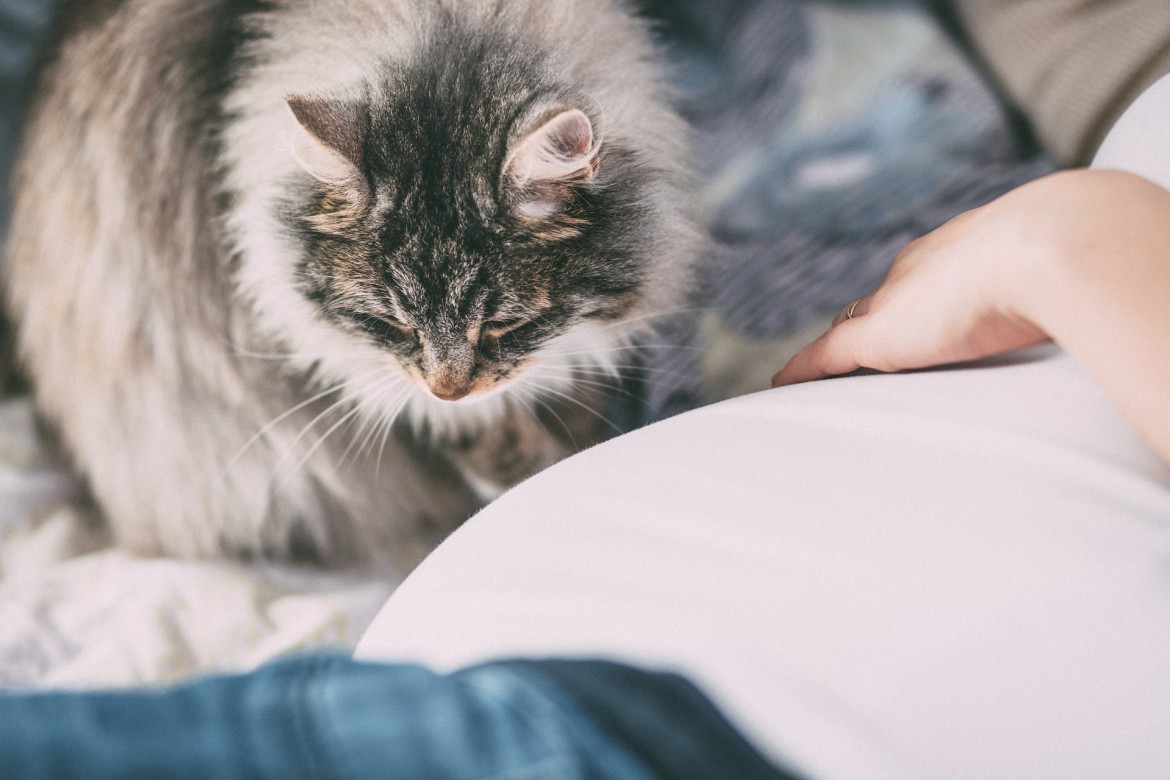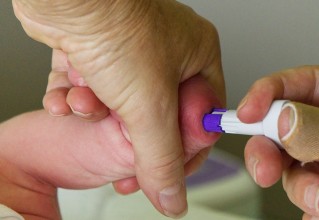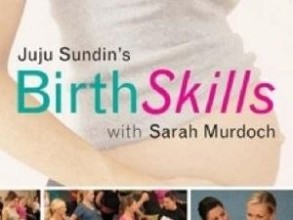What happens if the baby's shoulders get stuck during childbirth?
05 Oct, 2019Shoulder Dystocia in the newborn during labour
Shoulder Dystocia is a situation where the baby’s shoulders are stuck inside the pelvic bones and don’t seem to be able to come out. When the baby’s head comes through the baby will spontaneously turn 90 degrees and the shoulders should come through. The midwife will move the baby’s head towards the floor to help the upper shoulder (the one that is on top) come out. After that the midwife may gently pull the head upwards towards the ceiling to help the lower shoulder (the one closest to the floor/bed) come out. Sometimes it will be the opposite way and the lower shoulder will be the one that needs to come out first, you can see which feels easiest and follow that shoulder. Ina May Gaskin states that the shoulders should be delivered slowly to protect the mother from tearing of the perineum. The baby will also be like a slippery little eel so hold it firmly.
What happens if the shoulders are really really stuck?
The Gaskin Manoeuvre
If the baby has large shoulders, and neither upper or lower shoulder seem to be coming out using the above method of traction, then turn over so you are on your hands and knees and the midwife will hold the baby’s head from behind you, trying to apply traction in this position. Moving on your hands and knees succeeds in opening up the pelvis even more than whilst you are sitting or lying down. The pelvis is made up of four separate bones and the ligaments between them allow them to stretch the most in this position to make the pelvic passage wider for the baby’s head to pass through.
Ina May states in Spiritual Midwifery that she learnt this technique from a Guatemalan midwife who learnt it from Mayan Indians and the Farm midwives then began to use it successfully to solve shoulder dystocia. She explains that the position works because the mother’s coccyx doesn’t have the pressure it normally would when sitting, instead they baby’s weight would push on the symbus pubis, widening the anterior to posterior diameter. The obstetric front to back diameter is the distance from the inner edge of the pubic bone (the hard bone at the front of your body over your vagina) and the tip of the sacrum (the hinge joint between the sacrum and the tailbone). Gravity will also help to push the bay down.
The upper arm (that is the posterior arm) will most likely be the one born first. If it doesn’t come out easily, then the midwife will find the baby’s posterior armpit and put two fingers under it to pull it out. If that doesn’t work, it may be necessary to bend the arm at the elbow and pull the arm out first before the shoulder comes out.
Ina May strongly recommends against using the knee to chest position for shoulder dystocia as gravity is working against you.
Other Medical Manoeuvres
McRoberts Manoeuvre - The McRoberts Manoeuvre was developed by William McRoberts which is where the mother sits up on her back, with knees pulled up to chest, and the baby is pulled out in this way with mums legs hyperflexing to stomach.
Zavanelli Manoeuvre - The Zavanelli Manoeuvre is one that some website say should be used as a last resort. This is where the head has been delivered but in the cases where should dystocia occurs and the shoulders won’t budge, the head is pushed back into the birth canal and a c-section is then performed. Subprapubic pressure - This is when the doctor makes a fist and applies pressure on the mothers lower abdomen directly above the pubic bone to push the baby out. This is usually used in conjunction with the McRoberts Manoeuvre.
Rubins I Manoeuvre - While the woman is in McRoberts position, place both hands over the stomach where the posterior fetal shoulder would be and apply pressure in a downward lateral motion before applying intermittent motion. The traction will help move the baby down and is more successful when applied with the McRoberts manoeuvre.
Rubins II Manoeuvre - This is when the midwife or doctor puts their hand in the vagina and puts two fingers on the anterior shoulder and pushes the shoulder towards the melvis to reduce the diameter of the shoulders as they are pushed out.
Woods Screw Manoeuvre - Same as above but maintain rotation of both shoulders, e.g. move upper shoulder towards the pelvis, and move lower shoulder back, to turn the baby. Reverse Woods Screw - Reverse of the above (opposite direction). Delivery of the Posterior Arm - Like with Ina May’s directions, put a hand in the vagina and find the posterior arm, flex the elbow in front of the body and remove the foream, passing it over the chest and face, out of the vagina. Removing the arm will reduce the shoulder girdle and help the shoulders to be born.
Evidence Based Research
Having a look at studies available online, there don’t seem to be any that I could find comparing different methods of delivering a baby vaginally with shoulder dystocia. I did find the following articles though:
https://www.birthinjuryguide.org/birth-injury/types/infant-shoulder-dystocia/
This article states that some of the indicators of a higher risk of infant shoulder dystocia are: •Maternal diabetes •Fetal macrosomia •A late labor and delivery •Prior instances of shoulder dystocia during delivery •Induced labor •Epidural use •Maternal obesity •Pregnant with more than one baby
The article also states that treatment will depend on the injuries caused for example physical therapy, massaging or in severe cases surgery. Delivery of an infant with shoulder dystocia can be achieved with medical manoeuvers like internal rotation, McRoberts manoeuvre and the Zavanelli manoeuvre.
https://www.kemh.health.wa.gov.au/~/media/Files/Hospitals/WNHS/For%20health%20professionals/Clinical%20guidelines/OG/WNHS.OG.Labour-ShoulderDystocia.pdf
This article is a flowchart from a Western Australia hospital that provides directions on how to address shoulder dystocia. It includes some of the manoeuvres described above including the Gaskin Manoeuvre, and also - believe it or not - deliberate clavicle fracture of the fetus to deliver the baby.
Other risk factors it describes are abnormal pelvic anatomy, post dates pregnancy, diabetes, maternal obesity, prolonged second stage, prolonged active phase in first stage (basically anything prolonged), short stature and gestational diabetes.
It also provides this helpful mnemonic HELPERR:
H = Help
E = Evaluate for episiotomy
L = Legs (McRobert’s Manoeuvre).
P = Pressure (Suprapubic)
E = Enter vagina (Rubin’s, Woods)
R = Remove the posterior arm
R = Roll the patient onto all fours
The Flip Flop Steps
https://midwiferytoday.com/mt-articles/flipflop-four-steps-remember/
This August 2012 Issue of Midwifery today describes the FLIP FLOP Method to delivering a baby vaginally with shoulder dystocia.
1.Flip the mom over with the GaskinManeuver
2.Lift the Leg
3.Rotate baby to the Oblique
4.Bring out the Posterior arm
F
Flip the mother over on her hands and knees so this makes the largest diameter for the pelvis. This is the technique described above by Ina May Gaskin
L
Lift the leg so that the knee is up by the mums armpit and it looks like she is about to run a race - The Running start position. This will pull open the pelvis on the same side where the leg is lifted. Ina May advises against this position.
O
Rotate the baby into the oblique diameter of the pelvis, or move the baby’s shoulders to reduce the diameter of the shoulders.
P
Bring out the Posterior arm so that the baby’s diameter is 20% smaller and the baby’s anterior shoulder can be rotated 180 degrees and brought out the same way.
The statistics for over 2500 births at the Farm Midwifery Center show a C-section rate of less than 2% (compared to a national rate of 32.8%), with low rates of anesthesia use, forceps deliveries, episiotomies, and perineal tears (see preliminary report of 2844 pregnancies, 1970-2010 below).
In Summary
In summary, the midwives at the farm have successfully delivered 2844 babies with only 2% needing a c-section and 0.37% forceps delivery. If the national hospital rates are 32.8% for c-section, surely that means we need to be doing something better in hospitals to assist women in having a birth with little or no intervention. Have a look at the statistics for births at the Farm Midwifery Centre here http://birthstorymovie.com/about-the-farm-midwifery-clinic/
C-sections are an amazing invention and have saved many lives, but remember, until 1500 when a man in Switzerland performed a C-section on his wife successfully after 13 days of labour, there were no C-sections and plenty of breech babies and babies with shoulder dystocia were delivered without it. https://www.nlm.nih.gov/exhibition/cesarean/part1.html
If, in labour, you find yourself in a situation where your baby’s shoulders are stuck, and a doctor is pushing for an episiotomy or a c-section, I hope you remember these techniques and suggest using this first if it seems like something you would want to try first before accepting medical interventions.
Cover Image from Pixabay
Get The Best Of Sleepy Roo Delivered To Your Inbox
Subscribe to my newsletter and get the latest info on baby sleep! You can unsubscribe at any time.



